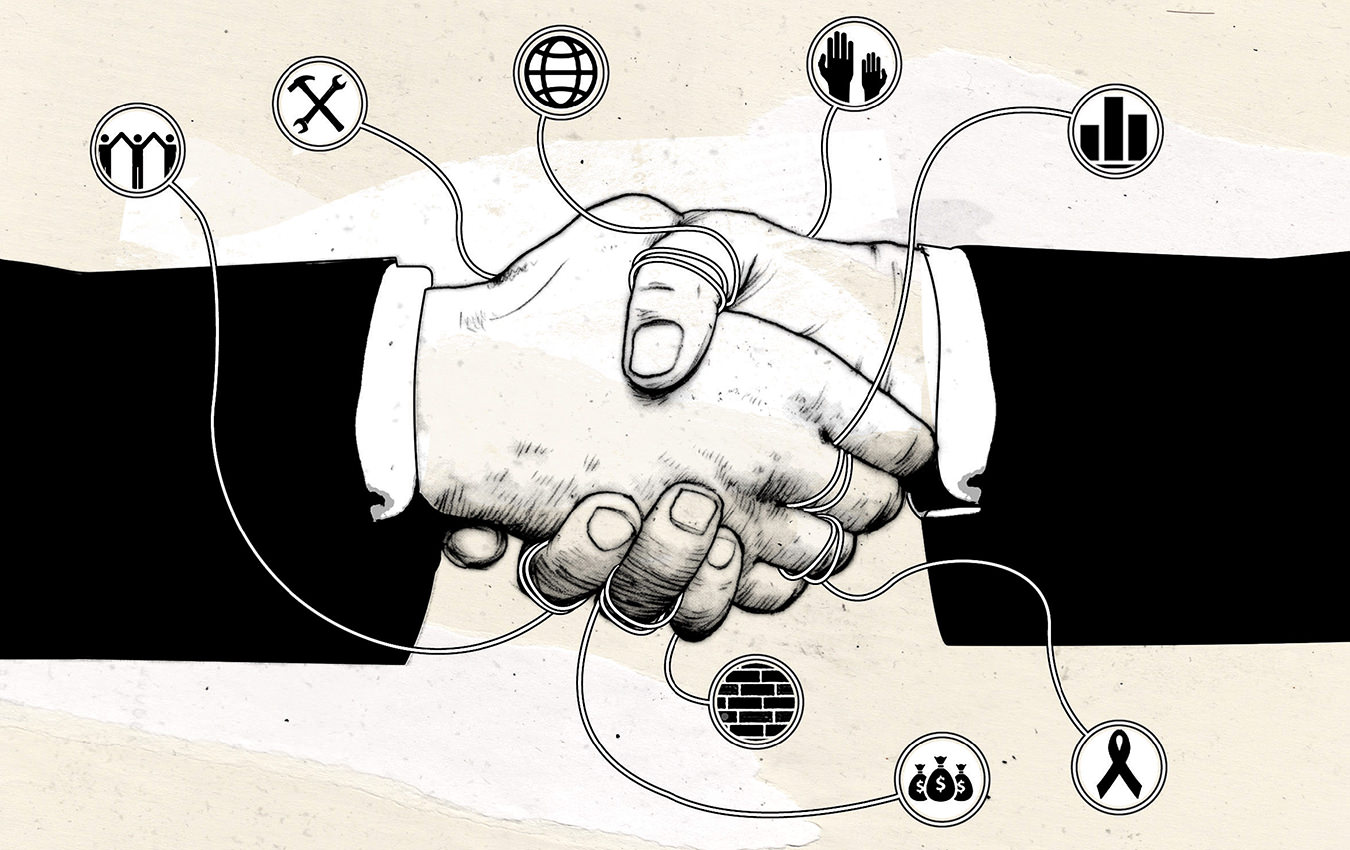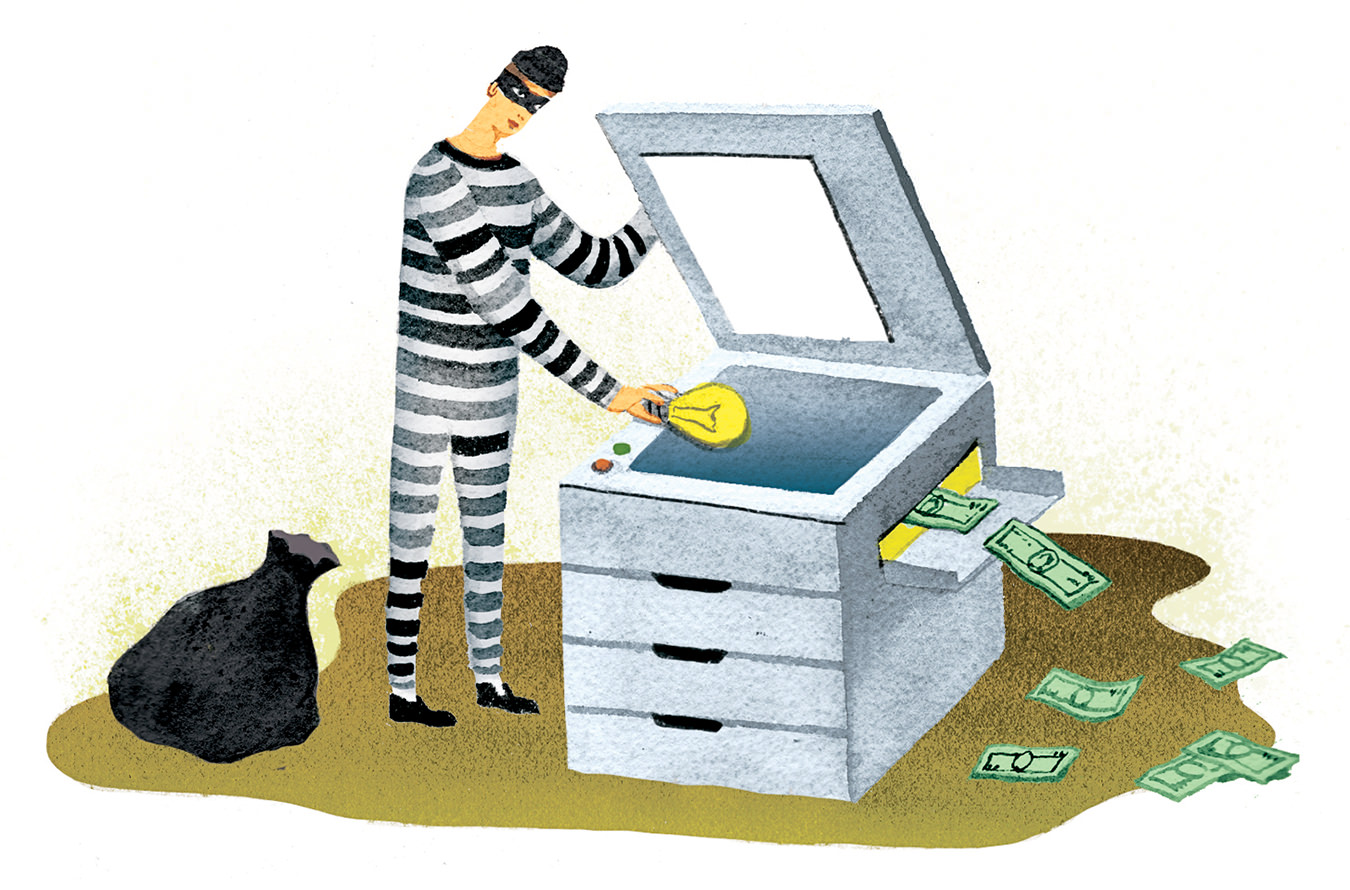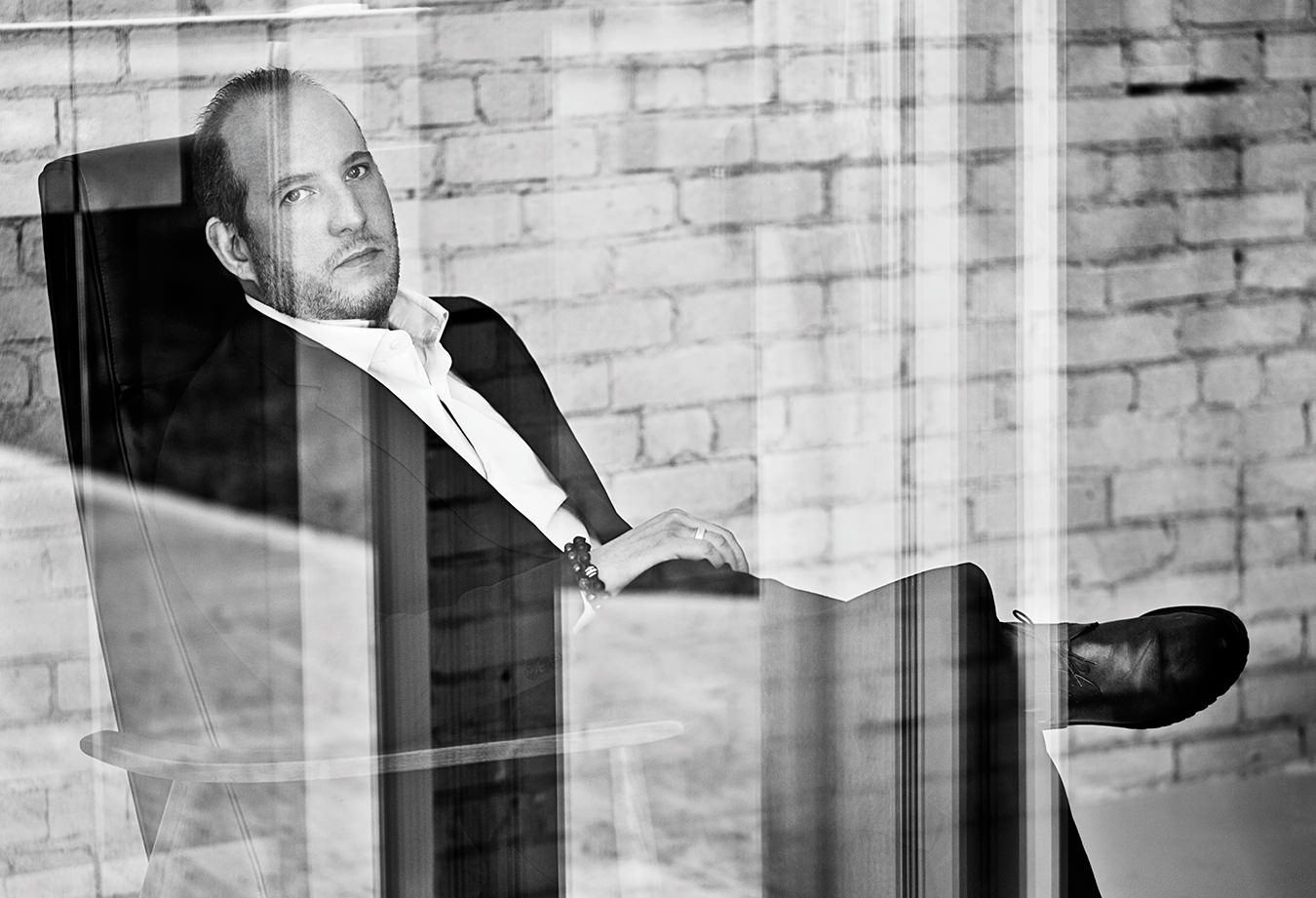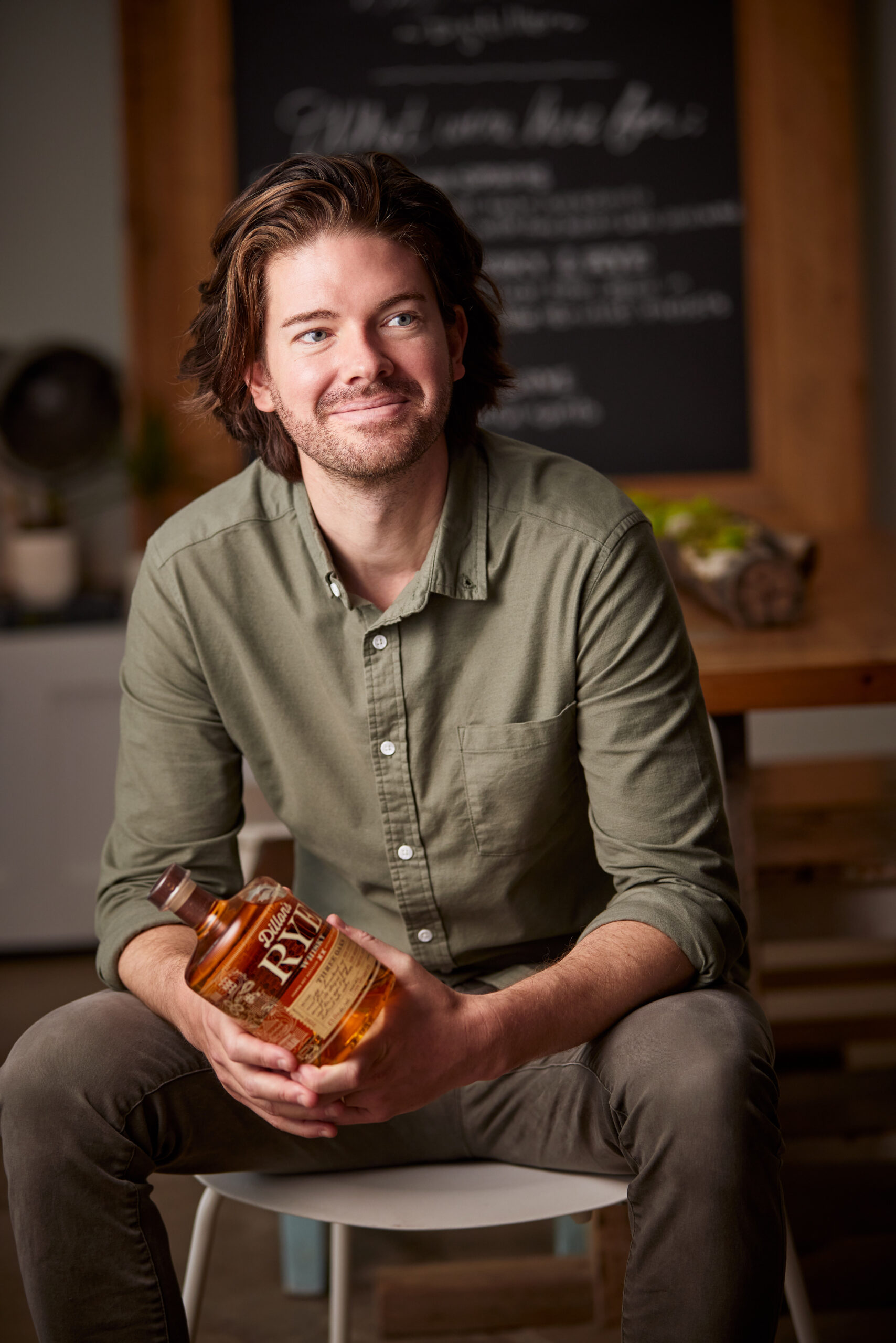The Big Give
Philanthropically minded entrepreneurs are changing the way we donate.

Illustration by David Foldvari.
The 1980s had no shortage of cinematic masterworks: Raging Bull, E.T., Platoon, Tootsie, to name only a few. The 1985 film Brewster’s Millions, however entertaining it may be, is not to be counted among them.
For those who missed it, the screwball comedy stars a (relatively) clean-mouthed Richard Pryor as Monty Brewster, a down-on-his-luck minor-league baseball pitcher who learns he is the sole heir to his great-uncle’s multimillion dollar estate. True to comedic form, the good news comes with a catch: before he can join the well-to-do on Park Avenue, Brewster will have to spend like a sailor on shore leave. Specifically, if he can find a way to blow $30-million in 30 days while playing by his uncle’s strict rules (he can’t destroy the money, he can’t gamble or give away more than a tiny portion of it, he can’t tell friends about the game that’s afoot, and so on), he gets the entire pile of $300-million. Cue hilarity and roll camera.
One does not necessarily watch comedy for its didactic qualities, but Brewster’s Millions may be an exception. However ridiculous the premise, however risible the acting, Monty Brewster is a case study in the downside of great wealth. As Monty’s struggles illustrate, wealth changes people. And the most poignant insight of all: while spending wealth is easy, spending it with purpose is quite another matter.
It’s a bitter irony, and one that many high-net-worth individuals have faced. After a lifetime of financial freedom and material abundance, how does one make meaning out of one’s millions? Giving back to the community, helping those less fortunate, improving the world—all noble goals. But how, practically, does one do it? How can one get good work done while getting the best bang for one’s charitable buck?
These questions have become even more important with the rise of the so-called entrepreneurial class. Despite Paris Hilton’s best efforts to convince us of the contrary, the rich in North America are anything but idle, and very few live off the toil of their dead relatives. If anything, it is the opposite: through the course of their research on the world’s wealthy (published every year as the World Wealth Report), Merrill Lynch and Capgemini noted in 2009 that fully 47 per cent of the world’s millionaires made their money by owning a business. A further 23 per cent became wealthy through “income” (i.e., a generous executive or professional salary). A mere 16 per cent inherited their money, and their ranks have been steadily declining since such statistics were first recorded.
To charities, this has made all the difference. When you make your money yourself, you tend to care a great deal about how it’s managed, what it’s being spent on, and what you get in return—even when you’re giving it away. Little surprise, then, that over the past several years, charities have noted a distinct shift in the way wealthy people give: they have become more strategic about which causes are worthy of their attention. They’re being more targeted with their donations. They’re becoming much more engaged with their causes of choice, participating with their time as well as their money, and insisting on transparency and accountability.
Consider some of the big-name business titans that have made a splash with their munificence: Sir Richard Branson (the Virgin Group), Steve Case (America Online), and Canadian Jeffrey S. Skoll (eBay) have all donated significant chunks of their personal fortunes to make the world a better place. Unlike the philanthropists of old, this new breed of “philanthropreneurs” (an accurate if clumsy description) are highly motivated, highly individualistic business founders in the prime of their working years.
Unlike the philanthropists of old, this new breed of “philanthropreneurs” are less concerned with putting their names on the sides of buildings and more concerned with affecting real change.
It’s not just the size of their donations that is gathering attention, although that is impressive enough. Nor is it some of the cutting-edge causes they support (for the aforementioned titans, that would be alternative fuels, brain cancer research, and environmental stewardship, respectively). Rather, it is the way that support is structured. Instead of keeping business and charity separate, they are blurring the lines between the two, taking the lessons from the world of venture capital and applying them to philanthropy—and in the process, changing the way we think about both.
Call it a new kind of philanthropy, one less concerned with putting its name on the side of a building and more concerned with affecting real change. A philanthropy less interested in cutting blank cheques and more interested in knowing exactly how every dollar is spent. A philanthropy less impressed with vague, pie-in-the-sky goals and more impressed with incremental, measurable success. A philanthropy more in step with the innovation and big ideas of the Silicon Valley entrepreneur than the noblesse oblige of the robber baron philanthropist.
Just Imagine
At the vanguard of that new generation is the Wilson family of Vancouver. Monday to Friday, you can find Chip and Shannon Wilson at the helm of Lululemon Athletica, one of the most successful (and ubiquitous) athletic apparel companies on the planet. A good deal of their spare time is spent at the charity they founded in 2007, Imagine1Day. The organization focuses on improving primary education for children’s first five to nine years of schooling in the Tigray region of northern Ethiopia.
Deciding on a specific African nation was a difficult decision. “We looked at a few key indicators,” Shannon Wilson says. “Where could our money go the furthest, with the biggest impact? Where was there a stable government? Where are there communities and governments willing to partner with [us]?” As Wilson explains, the answers led them to Ethiopia. By supporting an educational infrastructure in a country that has long been known as one of the most illiterate on earth, the Wilsons hope to provide the fertile soil from which a generation of success can grow.
When it came time to fund their charity, the Wilsons could have easily done what many high-net-worth families do: write a cheque, shake some hands, and wish the charity luck. Instead, they decided to do something different. “We took what we believed were some of the best business practices from Lululemon and applied them to a charity,” she says. The result is an approach that is both pragmatic and revolutionary at the same time.
Example: the way Imagine1Day deals with overhead. “We wanted to make sure the organization was transparent with its spending,” Wilson says. And so, when it came time to make a donation, the Wilsons decided it would go toward a very specific purpose: administration costs. With the Wilsons’ $10-million lump-sum donation generating enough cash to keep the lights on, 100 per cent of all other donor money goes directly to the organization’s various projects in Ethiopia—about $400,000 last year alone. “A donor should not pay for our photocopying or office chairs,” Wilson says emphatically.
The effect of such a structure on donor motivation is difficult to quantify. Nevertheless, Imagine1Day executive director Sapna Dayal believes it is real. “What it’s about is feeling connected,” she explains. With administration costs funded internally, donors feel more directly involved in the cause. This in turn facilitates what Dayal calls an “exchange of value.” Simply put, donors give money to the cause, and the cause gives something back: a feeling of goodwill that you’re part of the solution rather than the problem. “There’s something deeper, [with donors] knowing and being able to talk about what [giving] is doing for them,” Dayal says.
This idea of donor participation is one of the central features of the charity. Unlike many other charities, Imagine1Day gives donors the ability to target their donation to specific parts of a specific educational project: a blackboard for a classroom, for example; a desk that seats three students; a square metre of concrete for the school’s floor. These donations are posted on the organization’s website as they come in, so donors can track progress toward a specific funding goal in real time. The result is a grassroots, $20-at-a-time activism that is a radical reinvention of how giving works, and what it’s supposed to accomplish.
A Culture of Success
Perhaps the most innovative thing about Imagine1Day is its culture. This is an organization that doesn’t shy away from its entrepreneurial roots. Board members are all successful professionals or business owners with decades of on-the-ground management experience. Unsurprisingly, this background has helped create an organization that excels at controlling costs, seeking out partnerships, and coming up with creative solutions to complex problems. It’s not the way traditional charities do it. And that’s the point.
“We don’t look a lot at what other charities are doing,” Dayal says. “We just create from nothing. We kind of go, well, what could it be?” The result has been an organization where team members are actively encouraged to “blue sky” a problem before settling on a solution. “We find that the greatest value we bring is that creative listening—helping people to remain in what we consider the world of possibilities.”
In this way, the key to Imagine1Day’s success has nothing to do with operations or finance, but rather how the organization sees itself. “We’re not here to help people—we’re not an aid organization,” Dayal points out. “We’re here to partner with people.” As she explains, this idea of partnership extends to every one of the charity’s many stakeholders. “Whether it’s working with our partners in Ethiopia, or whether it’s working with people who are giving to us here, they’re all partners, and they’re all investors in the same overall vision.”
Wilson agrees. “The traditional model of charity is that you give something to someone because they can’t get it on their own,” she says. But the goal of Imagine1Day isn’t to distribute handouts, but rather to enhance opportunity. “[We] work from the perspective that all individuals possess the ability to generate what they need,” she says. In this way, the organization empowers Ethiopian students to make their own change, one algebra problem, one chemistry lesson, one reading assignment at a time.
Imagine: charity of the people, by the people, for the people who need it most. What a radical idea.








